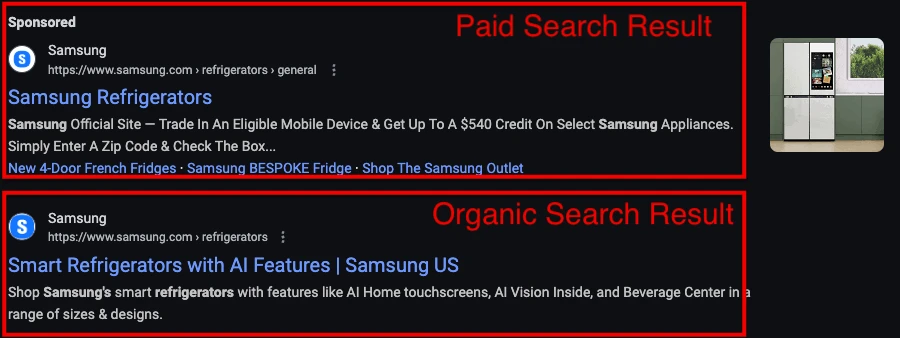Introduction:
Welcome to Part 2 of: Is Your Marketing Agency Cutting Corners? This blog highlights one of the most common “smoke and mirrors” tactics used by marketing agencies to artificially boost paid campaign performance. Let’s dive in.
Branded Keyword Abuse in Paid Search: A Closer Look
High return on ad spend (ROAS) and strong paid search performance are crucial – but key performance indicators (KPIs) don’t always tell the full story. Context matters. One common tactic used by agencies is to inflate performance metrics is the overuse of branded keywords. But what are branded keywords and how they can be misused?
What Are Branded Keywords?
Branded keywords encompass all search terms related to a company’s name or specific product names. If an organization has done its SEO right, it should naturally appear at the top of the first page for all relevant brand-related searches. However, since Google prioritizes paid ads above organic listings – which now appear nearly identical (photo below for reference) – even brands with strong SEO can be pushed down the page unless they run paid branded campaigns.

This setup benefits Google financially, as it increases the likelihood of paid clicks. While this raises concerns (which we’ll explore further in another blog), there is still strategic value in bidding on branded terms to keep competitors at bay.
The Defensive Case for Branded Campaigns
Allocating a small portion of your paid search budget to protect branded keywords is usually a smart and low-cost defensive strategy, as it prevents competitors from capturing prime ad space at the top of search results. Thanks to domain authority and SEO strength, as a company grows and becomes more prominent online, it will typically pay much less per click than competitor’s targeting their brand-related keywords.
It’s important to note: search engine providers, such as Google, allow competitors to bid on your brand and product keywords but they prohibit use of trademarked names in ad copy without the explicit permission of the trademark owner. If you see a competitor using your trademarked brand or product name in a Google Ad, report it using the link below.
TIP: Report Google Ads copyright infringements using this link: https://support.google.com/legal/troubleshooter/1114905?sjid=10200231476555599418-NC.
When Branded Keyword Spend Becomes a Problem
While allocating a small percentage of paid search ad spend to branded campaigns is wise, some agencies or marketers may exploit this tactic to artificially boost ad attribution performance. Why? Because branded keywords often yield higher click-through rates (CTR) and conversion rates (we often see branded keyword CTRs averaging twice as high as non-branded). But this doesn’t always reflect true paid ad effectiveness in terms of maximizing revenue and profit.
Consider this scenario: a user searches for “Nike Pegasus”, a popular running shoe, and Nike’s agency (we’ll call them Shoe Marketing) is bidding heavily on that term. Their ad gets clicked, and the ad performance metrics soar. However, that potential customer was already looking for Nike and likely would have clicked an organic search result if no ad appeared. That paid click didn’t add new value – it just incurred a cost for acquiring traffic Nike likely would have sourced for free.
Meanwhile, the budget used for that branded click wasn’t spent on more competitive, brand-agnostic search terms like “long-distance running shoes.” These generic queries represent undecided shoppers – arguably the most valuable audience for paid ads. By intentionally focusing too heavily on branded terms, Shoe Marketing sacrifices growth opportunities for the sake of impressive (but misleading) metrics.
Part 2 Conclusion:
Branded campaigns should be part of every company’s paid search strategy – but used with care and intention. There’s no universal rule for the “right” budget split, but if more than 10% of your paid search budget is going towards branded keyword spend, it’s worth investigating further – (our paid search audits have unearthed branded keyword spend being as high as 40% of total paid search budget). That spend might be inflating performance on paper while missing more valuable customer acquisition opportunities capable of maximizing revenues and profits.



